Part of the beauty of Castles in Africa lies in the meaning behind each structure built.
Not all castle stories are as pleasant-sounding as the architecture that commemorates the period when palaces were built, however.
Unfortunately, a common theme for castle use included slave trading and housing prisoners of war.
However, they also have cultural, historical, and local meanings, such as protection from enemies and providing a feeling of physical security.
Most tourists probably don’t realize what castles represent.
However, there’s nothing wrong with appreciating these fortresses just for their physical face value.
12 Most Beautiful Castles in Africa
If you see sketches of castle ruins in Africa, you’ll see why they’re considered “beautiful.”
When still standing, they represent specific architectural styles, such as that of the Medieval castle period.
Some of them even received recognition from the UNESCO World Heritage organization.
You may have to use your imagination if you ever visit one of these locations though.
Not all the sites are left the way they were first built.
One other aspect of visiting castle sites is to look out and across to see the valleys and horizons – spectacular views.
That’s the advantage of visiting forts built on a hill.
1. Saladin Citadel
Salah al-Din built The Saladin Citadel in 1176-1183 AD. Saladin built this medieval fortress to protect the Islamic people from the Crusaders.
The Saladin castle provided both defenses against Cairo and Fustat attackers.
It also served as the Egyptian governmental seat, and rulers resided in it for more than 700 years.
You’ll find Saladin castle under a promontory, which is a plot of land that extends underneath the Mugattan Hills.
It made an excellent but not totally foolproof hiding place from enemies.
2. Fort Santa Cruz
The Spanish people built Fort Santa Cruz in 1577-1604.
This Mediterranean castle sits on the Pic d’Aidour about 400 meters (1,312 feet) above sea level.
Fort Santa Cruz sits where repeated attacks have occurred. Several improvements to this castle did not stop all the invasions, but they did help.
It’s in Oran along with the Fort de la Moune and Fort St. Phillippe.
Aesthetically speaking, you can look at it and notice the Spanish influence.
The people behind the architecture have a style that’s so fascinating it’s hard to explain in words.
Rounded windows and flat ledges are some “giveaways” of the Spanish style.
3. Elmina Castle
The Portuguese built Elmina Castle in 1482.
Today, the area where it resides is called Ghana, otherwise known as the Gold Coast in the past.
The Elmina Castle became the first trading post in the Gulf of Guinea region.
Unfortunately, it’s also one of the African castles that became a primary slave trading route.
The Dutch captured this present-day Elmina fort from the Portuguese in 1637 and ruled it by 1642.
Elmina Castle is one that reached UNESCO World Heritage Site significance status.
It has more of an infamous reputation because it also consisted of the Door of No Return.
This started the passage of many slaves across the Atlantic Ocean after they boarded ships from this castle exit.
4. Fasil Ghebbi
The Fasil Ghebbi, which was built between the 17th and 18th centuries, now sits in ruins.
These remains sit in Gondor, Ethiopia. Emperor Fasilides founded it and Ethiopian emperors lived here.
I think it would be worth visiting because of its architectural and artistic influences.
Nubian styles have influenced its creation. I’ve noticed pictures of neatly manicured landscapes around it too.
5. Great Zimbabwe
The Great Zimbabwe castle came to fruition as early as the 11th century.
Shona’s ancestors contributed to its early construction, according to Fodors.
I hear it contained some of the most fascinating series of balconies, towers, and monolithic (stone) sculptures.
Moreover, 18,000 people apparently lived in this location.
That’s almost 2,500 people per square kilometer (more than 6400 people per square mile).
Limited exploration of The Great Zimbabwe formations took place in the 19th and 20th centuries.
Even the little digging done in this location deemed it a World Heritage Site in 1986.
It is believed to have been created by indigenous people.
However, the Queen of Sheba and other well-known Egyptian rulers made it popular.
6. Ribat Monastir
During a time when Muslim conflict first occurred in North Africa, builders formed the Arabic Ribat Monasier.
This fortified settlement housed Murabitun, a group of Islamic voluntary military personnel.
Its foundation first existed in the Punic-Roman ruins that used to make up Ruspina, an ancient town.
It’s near the present-day city of Monastir, which has about 71, 546 people living in it as of 2022.
7. Citadel of Qaitbay
The Alexandria Citadel of Qaitbay became a strong defense in Egypt, particularly on the Mediterranean Coast.
A famous lighthouse that suffered earthquake damage three times between 956 and 1323 AD used to sit here.
Some of the surviving stones from the lighthouse became part of the Citadel of Qaitbay after 1480.
The former castle, later to become the Qaitbay Citadel, had received the title of Seven Ancient Wonders of the World.
8. Cape Coast Castle
I felt confused but exhilarated learning the history behind the Cape Coast Castle.
The Portuguese first came up with the name “Cabo Corso,” for the local settlement that houses the castle.
“Cabo Corso” means “short cape,” which later turned into “Cape Coast,” this present-day capital city’s name.
The city where the castle was first built in 1653 also had a trading lodge built in 1555.
I don’t know all the particulars, but somehow the Swedes became the influence behind present-day Cape Coast Castle. It also went by a different name, Carlousburg.
The Swedish people gave it this name to honor King Charles X.
There’s one fact about Cape Coast I didn’t want to learn: It apparently held up to 1000 people at one time and reporters unofficially classified it as a “slave castle” on the Ghanaian coast.
Apparently, more than 70,000 slaves came from here and other African locations.
9. Castle of Good Hope
The Dutch built the Castle of Good Hope circa 1666.
Joe Kennedy of AFK Travel reported that it’s the oldest South African colonial structure.
I would have thought of “Good Hope” as a happy place.
I suppose it could be, but it used to confine prisoners during the Second Anglo-Boer War that took place from 1899-1902. Some of its former cells still exist as of 2022.
The First and Second Boer Wars, otherwise known as the South African Wars, make up some of the most destructive times in African history.
It finally put at least a formal end to the British conquest.
Of course, it’s never that simple when it comes to wars, especially ones that started because of slavery and racial conflict.
To learn more about Cape Coast history, you may want to visit the Castle Military Museum which operates in the former castle.
10. Kunta Kinteh Island (Jacob Fort)
Kunta Kinteh Island has structures on it recognized by the UNESCO World Heritage site.
The Jacob Fort site and British administrative building ruins tell an important slavery story.
The word “wasteland” came to mind after reading a description of the ruins site.
Just some trees and stone slates and stubs stand where buildings used to be.
Settlers used to refer to Kuntah Kinteh as James Island.
It’s near the Gambia river mouth and Juffereh.
11. Ksar (Palace) of Aït Benhaddou
I just learned something. Another name for a king’s palace is a “ksar.”
The fortified city (city with protective walls) of Ait Benhaddou has become the kingdom of Morocco.
It sits between the Sahara Desert and the city of Marrakech.
By the way, the Morrocco Kingdom is also made up of three other imperial cities: Fez, Meknes, and Rabat.
What’s more, the Aït Benhaddou is actually a group of 50 palaces and six major forts.
Every individual palace also counts as its own port, according to some researchers.
12. Fort Capuzzo
Unlike other areas of Africa influenced predominantly by the French, Libya has a strong Italian influence.
Fort Capuzzo in Umm Sa’ad Libya reflects that.
The country of Libya which contains Fort Capuzzo is the fourth-largest African nation.
It’s also bigger than Alaska and sits near both the borders of Egypt and Libya.
The Fort Capuzzo fortress helped protect this area near Sollum from the Senussi people.
Its structure enabled it to provide living quarters guarded by the Italian military and/or guards.
Frequently Asked Questions
Who built the castles in Africa?
Well, you’ll find quite a few British castles, or you’ll see their ruins.
That’s because of all the colonization of African territories.
However, this country has a strong Portuguese, Italian and Dutch influence.
Do they still build castles in Africa?
If they do still build castles, it’s probably because of the preferred architectural style.
However, they could still help in a war if African people needed protection against the armed forces.
Why were African castles built?
It’s a way of protecting a city from invasive forces.
Castles also can protect civilians from gunshots, canons, grenades, and other war artillery.
What period in history do African castles represent?
They represent the Medieval period.
This era is also commonly associated with “knights in shining armor.”
However, you probably have also heard of palaces being built in ancient biblical times or earlier.
When were the African castles built?
Many African castles were constructed between the 15th and 19th centuries.
Some hospitality developers and individual homeowners, however, will still build houses in the castle style.
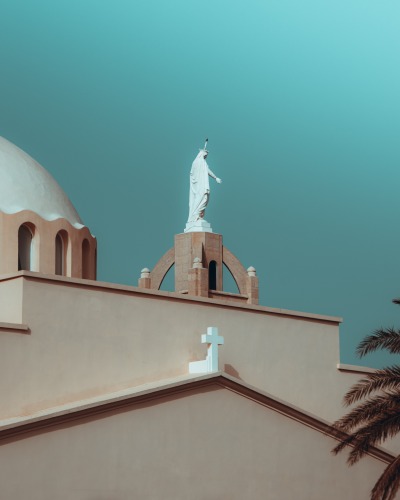
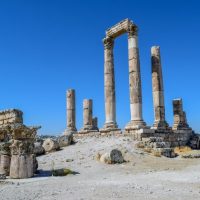
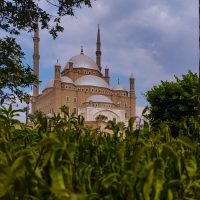
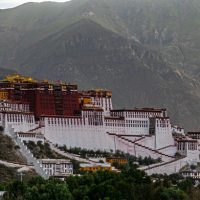
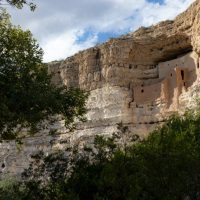
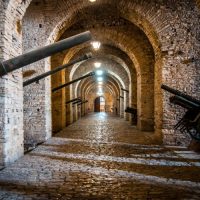
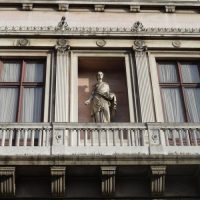





The castles in Africa have a complex history, with some being used for slave trading and housing prisoners of war, but they also hold cultural significance and offer stunning views.